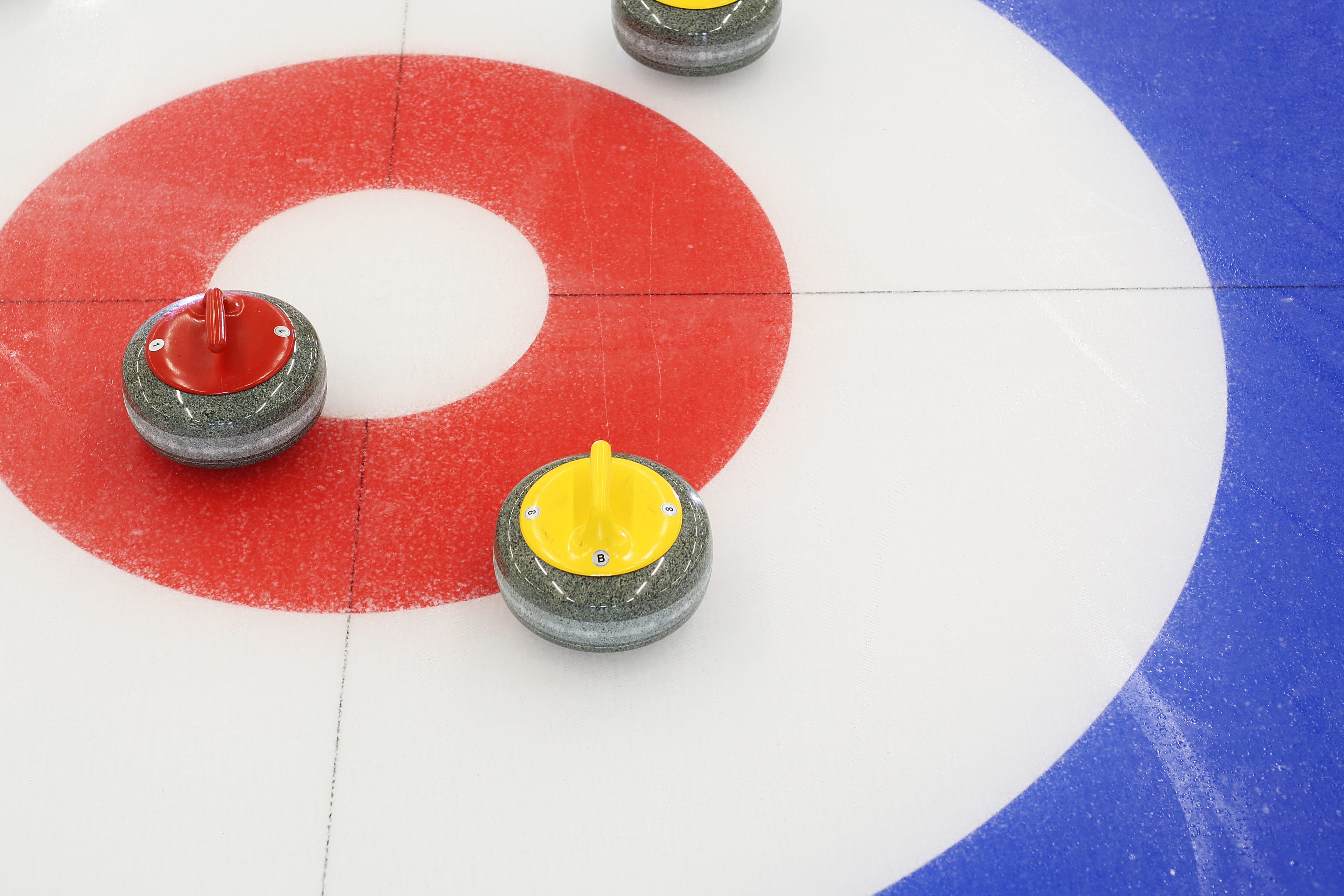
The Quest for the Perfect Ice: Strategic Ice Making for Curling
By Mary Kate McGowan, Associate Editor, News
From AHR Today 2020 Newsletter
Every four years during the Winter Olympic Games, one sport hits its peak popularity—curling.
“It swings in popularity every four years now,” said Daniel Dettmers, Member ASHRAE, a member of ASHRAE’s Publishing and Education Committee.
The game is strategic, like a chess match. Participants slide 42 lb (19 kg) granite stones down an ice sheet at a bullseye target called “the house” that is about 100 ft (30 m) away.

Like other sports on ice, such as hockey and speed skating, curling calls for different parameters for a quality playing surface, said Dettmers.
“Whether it’s hockey or curling or speed skating, everyone wants different temperatures. Everyone wants different conditions,” said Dettmers, a curler and vice chair of TC 10.2, Automatic Ice Making Plants/Skating Rinks.
But curlers are known to be particular about their playing surface. Factors such as heat and humidity can affect the ice in a curling center.
Quality Ice
While curling is popular in parts of the world such as Canada and the northern U.S., the sport is growing elsewhere such as the American west coast, Dettmers said.
Some curling clubs have their own centers, but others convert hockey arenas for the night. The main difference between a hockey playing surface and a curling playing surface is that curling requires “pebbling” the ice, he said.
“With curling, you have to have that pebble in order for the stone to curl. If it’s just smooth ice, you have no control over the stone, and it’ll just go flying off in one direction or another randomly,” Dettmers said.
Before a curling game, water droplets are dispersed across the ice sheet and rapidly freeze. The pebbles’ peaks are shaved off creating an even top surface with plateaus of different widths, Dettmers wrote in an article that appeared in ASHRAE Journal in 2016.
“The ice makers in curling are closer to artists than engineers. Every morning, they scrape off the previous day’s ice and recondition the ice through a series of pebbling and scrapes. For important competitions, like the Olympics, this is often repeated between games,” he said.
The water droplets’ size and temperature and the intensity of the spread of the water spray affect the playing surface.
Likening the conditioning process to waxing bowling lanes, Dettmers said ice makers can make the ice faster or slower and make the stones curl more or less.
Ice deemed “championship quality” is fast and curls the most, which creates the most exciting games, he said. Some of the larger curling clubs have systems that deionize the water, change the pH and monitor the ice.
“Basically, the intention is to make it the fastest ice possible,” he said.
Heat Considerations
Heat recovery strategies can help regulate the ice, Dettmers said. There are places throughout hockey arenas and curling centers with waste heat such as the locker rooms and the bleachers, he said.
In curling, eight participants are on a sheet, which can vary in size but is generally 150 ft (46 m) long by 15 ft (4.5 m) wide, according to Dettmers. The participants contribute about 800 Btu/h (235 W) to the curling center’s heat, but the main contributor is often the heat in the air that is usually set between 40°F (4.4°C) and 45°F (7.2°C), he said.
“The big heat loads are either plus or minus whatever is coming through the wall because these things are usually pole sheds or worse,” he said.
With a furnace creating heat that goes into the air, the heat goes into the ice then goes into the refrigeration system, which rejects the heat outside, he said. This can be accomplished by using a coil in the space to the refrigeration system’s condenser. The key is that the condenser is inside the icehouse.
“Traditionally, a natural gas furnace heats the icehouse air for comfort, but that is the refrigeration system’s largest load. Using the refrigeration system’s heat rejection as primary heat for the icehouse, air simply closes that loop to reduce the need for additional heat,” Dettmers said.
In new curling centers, clubs are looking into using water source heat pumps, he said, as opposed to using legacy systems such as R–22 refrigerant systems.
There is no one-set formula on how to create the best ice surface for winter sports, Dettmers said.